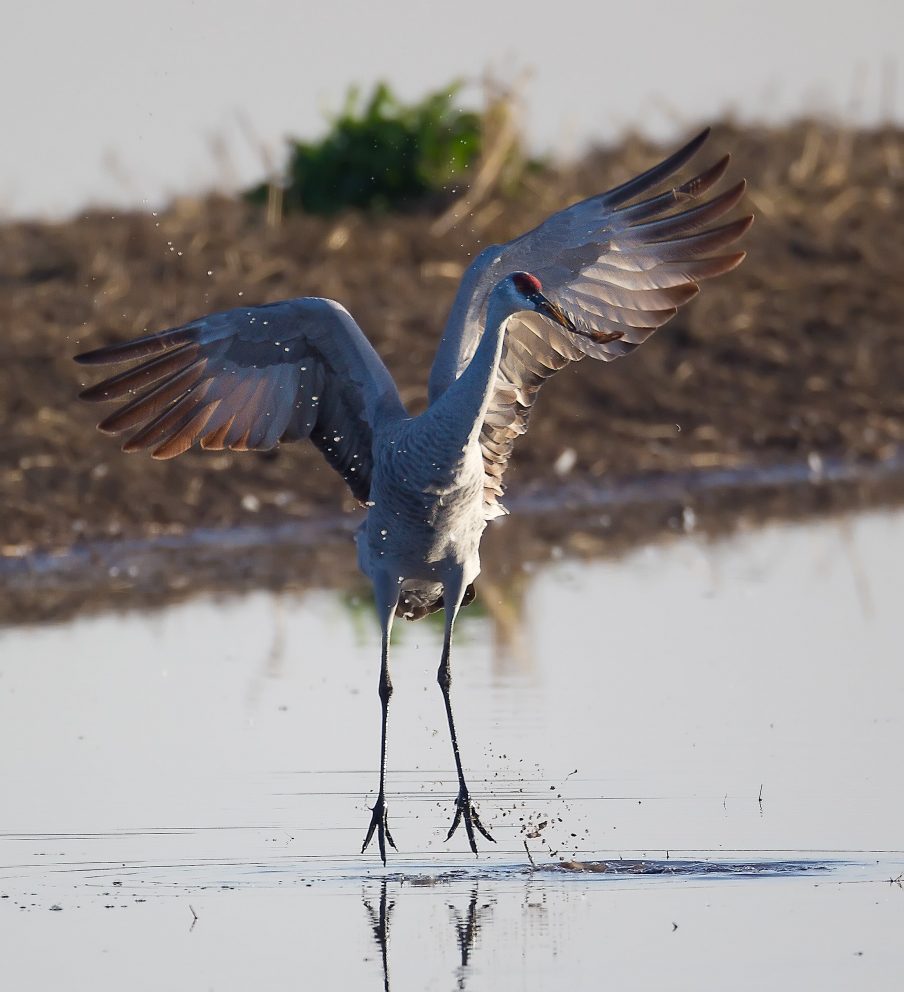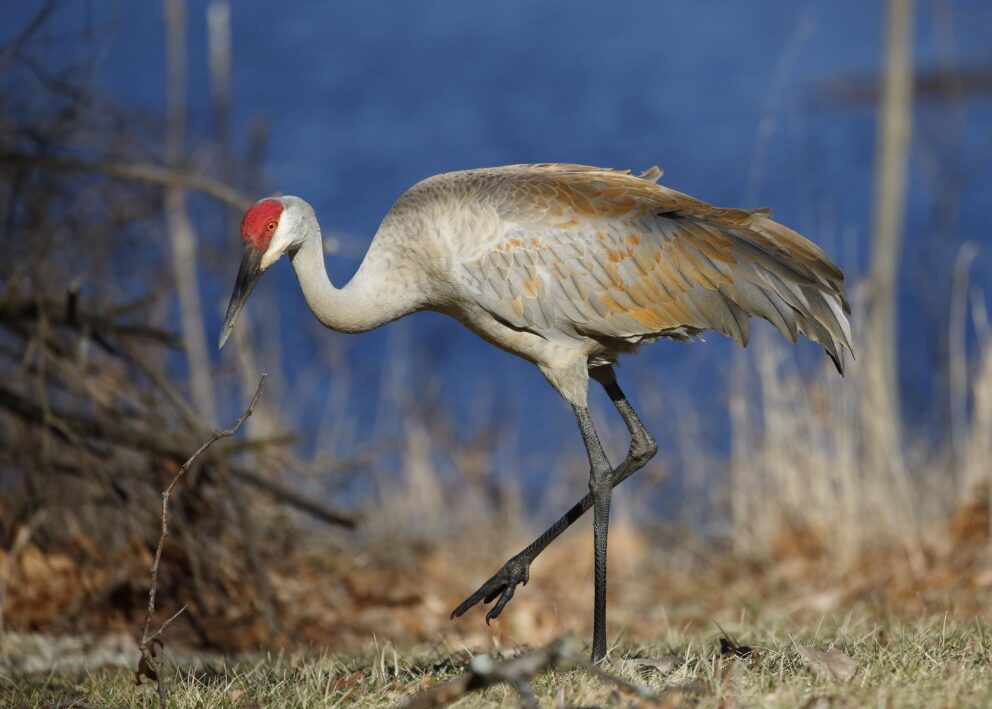- SCIENTIFIC NAME
- Antigone canadensis
- CLASSIFICATION
- Bird
- LIFE SPAN
- 7-20 Years
- SIZE
- 42-48” | 7.4-10.7lbs
- STATE CONSERVATION STATUS
-
- Priority Species
- State Protected
- FEDERAL CONSERVATION STATUS
- Least Concern
- GAME STATUS
- Non-Game
- GAME TYPE
- None
- Washoe
- Humboldt
- Pershing
- Churchill
- Mineral
- Lyon
- Douglas
- Carson City
- Storey
- Elko
- Lander
- Eureka
- White Pine
- Esmeralda
- Nye
- Lincoln
- Clark
Habitat & Range
Sandhill Cranes breed in northwestern and northeastern Nevada, and can be found migrating throughout the northern part of the state. They prefer open areas that are often wet like marches, edges of lakes and ponds, and river banks.
- Grasslands
- Marsh
- Rivers and streams
Threats
- Habitat Degradation
- Habitat Loss
Natural History
Sandhill Cranes are tall, elegant beauties that can often be seen in migratory or breeding groups across the state. Being the only crane species in Nevada, and one of the largest birds, they are hard to miss. Sandhill Cranes are omnivores, eating a wide variety of food items including foliage, roots, tubers, seeds, grain, berries, snails, crayfish, worms, insects, mice, frogs, snakes, and fish. They forage for food on land and in shallow wetlands, sometimes using their bills to probe and dig in the ground for food. Wetlands are their preferred habitat, using cattails, sedges, and other marsh vegetation to create their nests. It is unknown if the male or the female selects the nest site, but Sandhill Cranes create an intense bond that results in lifelong mating. Mate selection is carried out by performing a dance consisting of bows, leaps, and wing displays. Males will stomp the ground, fling sticks into the air, and jump high to show their strength. Females respond with playful energy. Even after their mate has been selected, they continue to dance through life to improve social relationships, defend territory, and even play. Vocalizations also play a vital role in social and mating relationships. The contact call is soft and low-pitched, and is used to keep in contact with other cranes even when they are unable to see each other in tall grass or reeds. Unison calls are made by a pair of birds standing in a particular formation close to each other calling a synchronized song. This call generally reinforces the pair bond between males and females. A guard call is used to warn other cranes of danger or to threaten other cranes and consists of a single, loud call. Prior to southward migration for winter, they congregate on staging grounds, generally within a day’s flight from their breeding area, where they become social after the breeding season and begin feeding and roosting together. They remain highly social throughout the winter. The two largest staging areas in Nevada, and good places to view Sandhill Cranes, are in Ruby Valley and Lamoille Valley located southeast of Elko. During the spring migration, the birds have a stopover in Lund, Nevada where they stay for several weeks. Once migration starts, they will fly in a “V” shaped or “J” shaped single line formation. They may travel 200 miles in one day during migration. They make the often long journey from their wintering grounds in northern Mexico and Texas, going as far north as northern Canada.
Fun Facts














